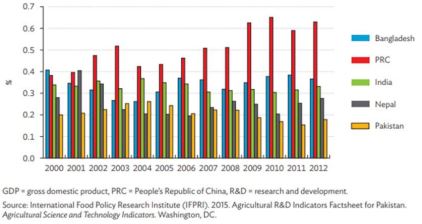Rice Production, Quality, and Nutrition: A Comprehensive Review on Challenges, Opportunities, and Global Perspectives
Keywords:
Nutritional Enhancement, Rice Biofortification, Basmati Rice, Micronutrient Deficiencies.Abstract
Improving rice's quality can significantly raise its worth for growers and consumers alike. This comprehensive review addresses the multifaceted aspects of rice, the staple food for over half the global population, and delves into the challenges and opportunities associated with its production, quality, and nutritional enhancement. It highlights the pervasive issue of micronutrient malnutrition affecting billions and the pressing need for sustainable solutions. The intricate connection between rice production and environmental changes, coupled with the looming challenges of climate change, is thoroughly explored. The paper emphasizes the role of quality control throughout the rice value chain, shedding light on the diverse factors influencing rice preferences and the economic implications of premium varieties. Micronutrient deficiencies, including iron, zinc, and selenium, pose significant health risks, particularly in underdeveloped regions. The review underscores the potential of rice bio-fortification as a promising strategy for long-term nutritional security. It draws attention to the disparities in approaches between developed and economically challenged nations, advocating for cost-effective methods to enhance the nutritional content of widely consumed cereals. The analysis of the global rice production landscape, with a focus on Thailand's premium varieties and India's Basmati rice, unveils the intricate interplay of market dynamics, policies, and consumer preferences. The paper provides insights into the challenges faced by the Basmati rice industry in Pakistan, attributing stagnation to inadequate research and development investments and a lack of policy commitment. The historical evolution of rice varieties and the impact of ecological and socioeconomic factors on rice types and grades are discussed. The distinctions between Indica and Japonica rice varieties, along with the varying amylose content, highlight the complexity of rice diversity on a global scale. Furthermore, the review examines contemporary challenges in Asian rice farming, emphasizing the importance of management techniques and selective breeding in improving overall quality. It delves into the complexities of rice grain quality, including the influence of environmental factors, post-harvest treatments, and economic considerations in the rice trade. In conclusion, this comprehensive review provides a nuanced understanding of the intricate world of rice production, addressing issues ranging from nutritional security to market dynamics. It serves as a valuable resource for policymakers, researchers, and stakeholders seeking to navigate the complexities of rice cultivation in a changing global landscape.


















